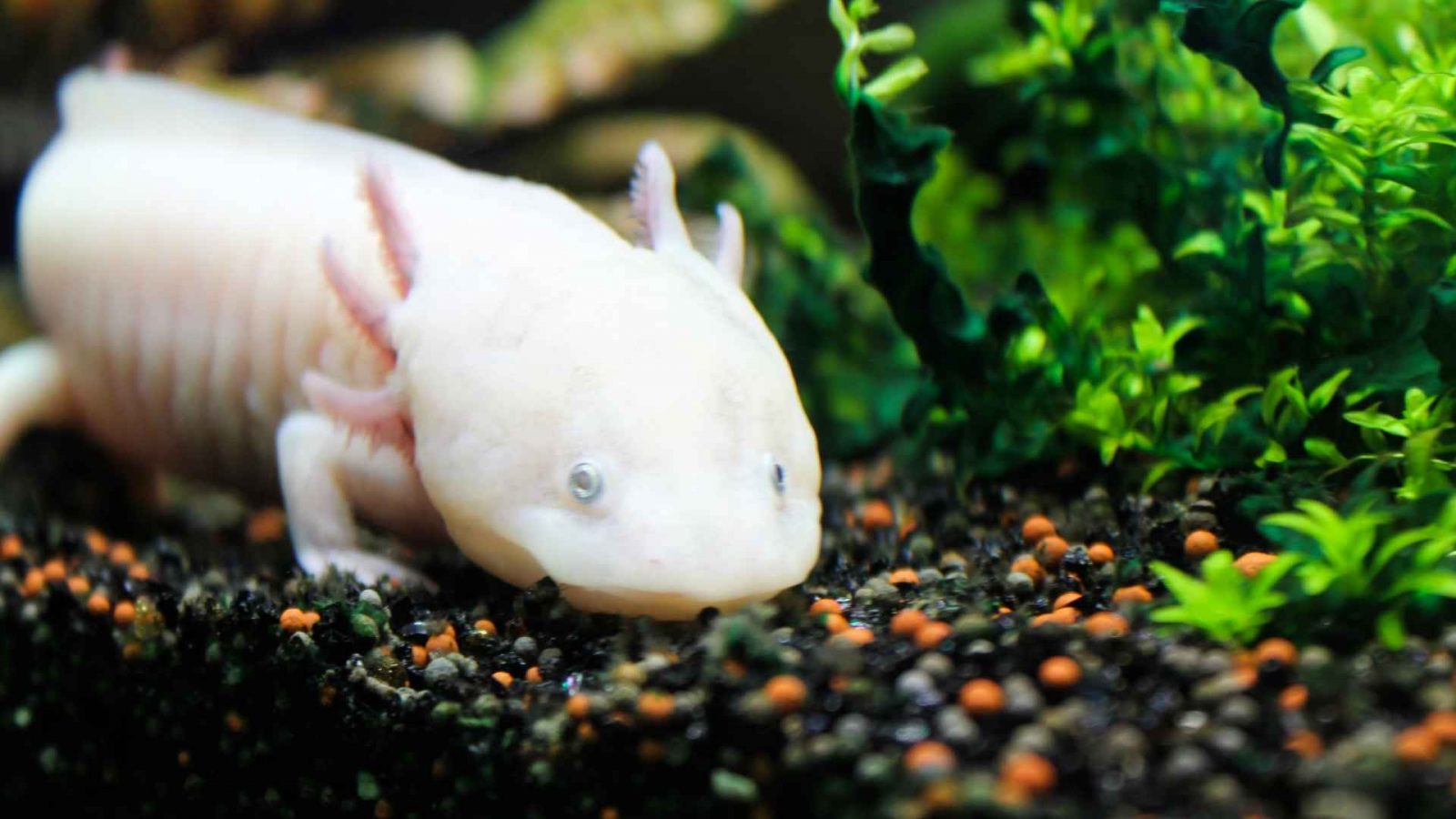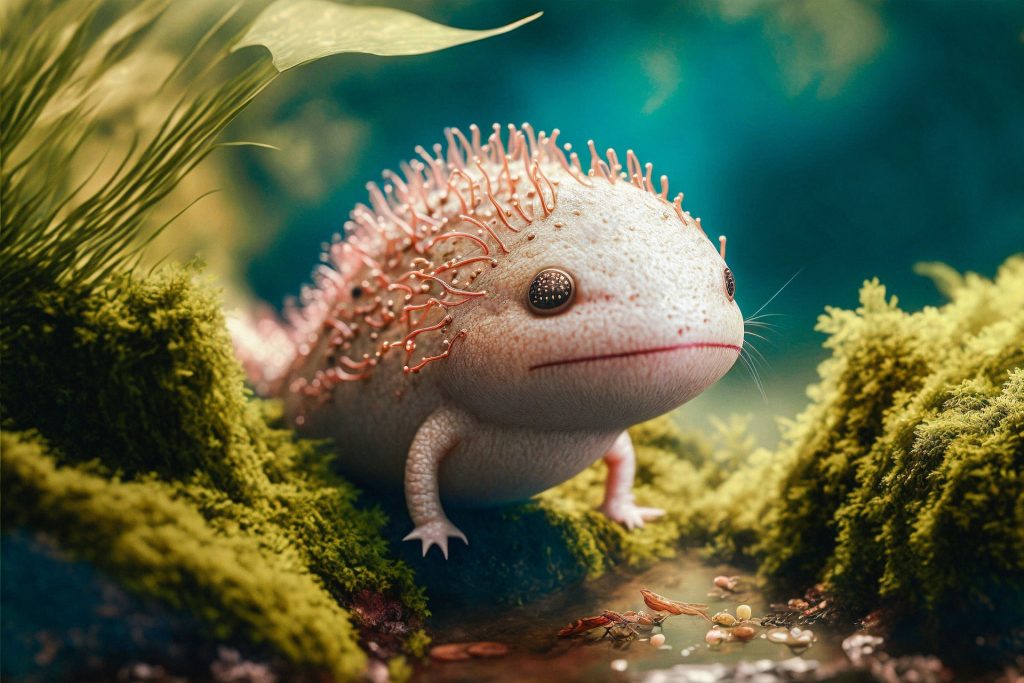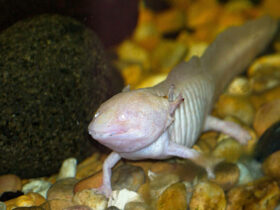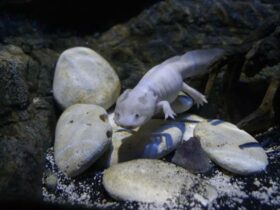
Contents
Is An Axolotl A fish? – Introduction

Axolotls are fascinating creatures that belong to the salamander family. They are native to Mexico City and are commonly known as the Mexican walking fish. While they have some fish-like characteristics, they are not fish.
Fish are vertebrates that belong to the animal kingdom’s superclass, Pisces, and have gills, fins, and scales. Axolotls, on the other hand, are amphibians, which means they can live both in water and on land. They breathe through gills when young but develop lungs as they age.
Axolotls also have four limbs with webbed feet, which they can use to swim and walk. They have a long tail, which they use for propulsion when swimming. Unlike fish, axolotls have no scales, a characteristic of all fish species.
Another significant difference between axolotls and fish is their reproduction. Fish lay eggs, which hatch into larvae, then grow into adults. Axolotls, on the other hand, are oviparous, meaning they give birth to fully developed offspring.
The Insane Biology of: The Axolotl: https://m.youtube.com/watch?v=bFkIG9S2Mmg&pp=ygUVSXMgQW4gQXhvbG90bCBBIGZpc2g_
Diving Deeper into the World of Axolotls
As discussed in the previous section, axolotls are not fish but amphibians with unique characteristics. Let’s look at these salamanders and explore what makes them so fascinating.
Axolotls in their Natural Habitat
Axolotls are native to Mexico and can be found in Lake Xochimilco and Lake Chalco. These lakes are part of an ecological reserve and are vital for the survival of this unique species.
Axolotls are considered critically endangered species due to pollution and habitat destruction. They have also been impacted by introducing non-native species, such as tilapia and carp, which compete with them for food.
Physical Characteristics of Axolotls
The most recognizable feature of axolotls is their external gills, which they use to breathe underwater. These gills are feathery, and they help the axolotl extract oxygen from the water.
Axolotls also have a regenerative ability that is unparalleled in the animal kingdom. If an axolotl loses a limb or part of its spinal cord, it can regenerate the missing body part. This ability has made them incredibly valuable to researchers studying tissue regeneration and regenerative medicine.
Axolotl Reproduction: A Unique Process
In addition to their incredible regenerative abilities, axolotls have a unique reproductive system. They have external fertilization, meaning the female lays eggs, and then the male fertilizes them with sperm. The eggs then remain outside of the female’s body until they hatch. Axolotls also can reproduce through neoteny – remaining in their larval state their entire lives yet still capable of reproducing.
As mentioned earlier, axolotls give birth to fully developed offspring rather than laying eggs like fish. Female axolotls can lay up to 1,000 eggs annually but usually only lay a few hundred at a time.
Axolotl larvae look like miniature versions of adult axolotls and feed on small organisms that live in the water. They go through several stages before adulthood and can take up to 18 months to fully mature.
Fully Developed Offspring
Axolotls are unique when it comes to their reproductive methods. Instead of laying eggs like fish, female axolotls give birth to fully developed offspring. Can you imagine popping out a fully grown human baby? Okay, that may be extreme, but you get the picture! Female axolotls can lay up to 1,000 eggs annually but usually only lay a few hundred at a time.
Miniature Versions of Adults
Axolotl larvae are adorable! They resemble miniature versions of adult axolotls and feed on small organisms in the water. As they grow, they go through several stages before reaching adulthood. This can take up to 18 months for them to mature fully.
Regeneration: A Mind-Blowing Ability
Axolotls are becoming an increasingly popular topic in the scientific community and for a good reason! Their regenerative abilities are incredible, with the capacity to regenerate limbs and parts of their spinal cord. This ability leads scientists down a path of further investigation to discern how these creatures accomplish such feats. Studying them can undoubtedly bring discoveries that may one day help revolutionize human medicine.
We briefly mentioned it earlier, but let’s talk about the regenerative abilities of axolotls. These creatures can regenerate lost body parts such as limbs and even parts of their spinal cord! Scientists are studying these abilities in hopes of applying them to human medicine.
Conservation Efforts Must Be Put in Place
It’s important to remember that we must protect all animals’ natural habitats, including axolotls. Unfortunately, they are considered an endangered species due to habitat destruction and pollution. Conservation efforts are necessary to ensure that future generations can enjoy these incredible amphibians.
Axolotls are considered endangered due to habitat destruction and pollution, rendering them vulnerable to becoming extinct species unless we work towards conservation efforts. Pollution is often the result of human activities such as industrial waste disposal, oil spills and toxic chemicals that seep into aquatic environments; therefore, it is important to practice sustainable living habits.
Conclusion
Axolotls may look like any fish swimming in your garden pond or aquarium but have a well-deserving place in our hearts, thanks to their unique reproductive methods and regenerative abilities. The future for these amazing amphibians lies in our hands – we must protect their habitats while working towards conservation efforts so that future generations can appreciate their existence too!
It’s important to remember that we must protect their natural habitat and work towards their conservation to ensure that future generations can enjoy these incredible amphibians.
In conclusion, while axolotls are similar to fish, they are not considered fish. They belong to the amphibian family and have different physical characteristics, reproduction methods, and life stages than fish species.
More Links:
Unfertilized Axolotl Eggs: https://adoptanim.com/unfertilized-axolotl-eggs/
Can Axolotls Live with Goldfish? A Great Explanation! : https://adoptanim.com/can-axolotls-live-with-goldfish/





Leave a Reply